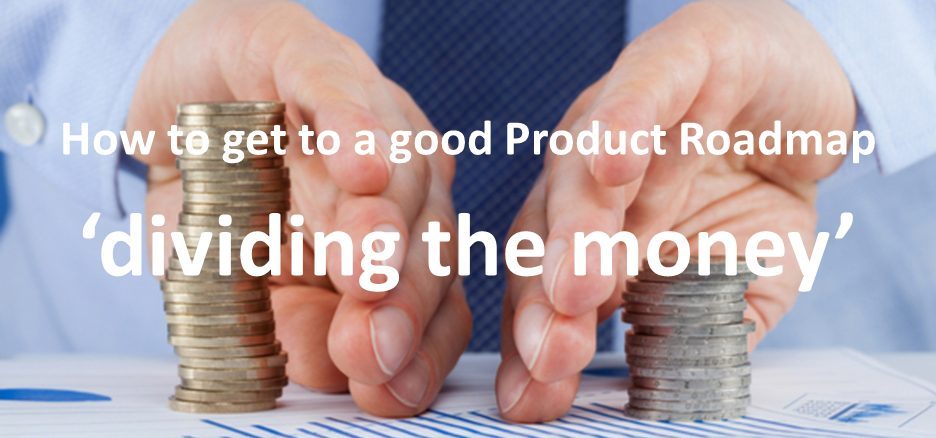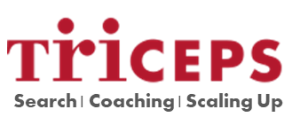
How to get to a good Product Roadmap - Dividing the Money
Dividing the money! Companies are often struggling with translating a strategy to good product roadmap and reliable R&D program which serves all the needs of the market and the organization. The product roadmap is one of the roadmaps needed in a longer consistent list: Market, Product, Technology and Resource Roadmap.
And next to those also a production roadmap, service roadmap and the list goes on. There is a lot of interaction between these roadmaps and information goes up and down. For example: the market needs a laser (market pull), so we need a product with a laser, so we need to understand the technology lasers and for this we have to get access to laser expertise. Or the other way (technology push): a laser would be better for our product, so we acquire the technology, develop the product and market it.
It is a stable product roadmap which makes R&D more efficient and allows operations and service (who only get a small piece of the R&D money) to make a long term strategic plan. Defining (Adjusting) the product roadmap should be an annual process with preferably annually limited adjustments. Nevertheless there are two major inputs which might intervene;
1. The Technology Push – the Apple model under Steve Jobs
The risk here is: does the market really need what you are developing, or can you influence the market enough like Apple.
2. The Market Pull – The risk of making me too products
Important here is where can you make the difference e.g. with your after sales for capital goods.
The strong department.
In any organization it is important to understand what are the “strong” departments or the departments dividing the money. If this is marketing you might go for market pull and short term new product development (small improvements). If it is the R&D organization you might go for technology push, revolutionary new designs, high technical risk.
You rarely see the service department to be the “strong” department. Although most people know that in the capital goods market the service contracts roughly deliver the same revenue as the initial sales. Often product development is optimized for sales-profit and not service profit (remember that economic recessions hardly influence the service revenue / profit; this is the reasons why most CFO’s like the service so much). Operations in most cases do have influence on the R&D program, because they are in the same building, your close colleagues and you meet them daily at lunch.

For the product roadmap also departments as service and operations should give their strategic plan as input. Of course marketing should be clear in which (new) markets they want to go (develop), which markets / products are the milk cows. A choice to be made: do you want to develop in a revolutionary way new products (bottom up) or evolutionary: changes to (sub-systems) of existing products. In capital product markets often the latter is used. It should be made very clear which specs (performance, usability) are improved and which not.
‘Chose for significant changes with limited investment; start from the marketing introduction and define the needed changes from here.’
The value of Powerpoint.
Power point is a nice tool to present a roadmap, but what is in a picture? What is defined with this “the best” product with the given date on the time line? You could also go all the way: have everything specified in detail, a lot of (un-read) documents. The goal should be to find something in the middle. Different departments understanding and trusting each other; room for further specifying in the future. In the agile world: specify the must haves (can be guaranteed in the given time e.g. 60% of the capacity to allow solving the unexpected)
Products to be developed should go through different phase (of which some can be skipped): what is the new technology to be developed/obtained and what is the risk. If the risk is too high then some experiments are needed. Those can also be put on the roadmap, often linked to the technology roadmap.
‘The product / market roadmap should acknowledge that there is uncertainty in the readiness of the product. A roadmap is not a commitment!’
Innovation starts with an A4.
Most companies have ISO900x also defining the product creation process (PCP). A proper PCP has phase defined and it is every phases has its requirements for documentation. For products on the horizon a simple A4 documents with the main points (not only the required product specification but also the market to be served) should be enough. Going to a concept phase the documents will increase up to a full blown product to be released. The most important mile stone / phase start is the point where R&D can commit time & spec and in most cases budget. At this milestone all departments are preparing for market release: production process, service documentations, supply chain development, marketing material, sales training etc.
‘At the end the product roadmap is not a single (power point) document but is a set of processes, tools documents and steps. A rigid road mapping process will to develop stable product roadmap, resulting in an improved R&D organization.’
Product Roadmap – ‘Dividing the Money’ by Corné van Sommeren
‘Building Strategy and translating same into organisational reality is a strength I would like to share with you’
Chief on Demand – Triceps Innovation & Technology





